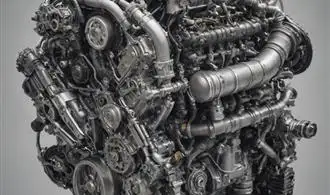
The Costly Consequences of Neglected Tundra Maintenance
Owning a Toyota Tundra is a point of pride for many truck enthusiasts, but neglecting its maintenance can lead to a host of costly problems. One of the most significant issues that can arise from neglected maintenance is the risk of premature engine failure. The Tundra's powerful V8 engine requires regular oil changes, air filter replacements, and attention to other critical components to ensure optimal performance and longevity. Failing to keep up with these routine maintenance tasks can result in sludge buildup, reduced lubrication, and ultimately, a catastrophic engine failure that can cost thousands of dollars to repair.
Another area of concern is the Tundra's transmission. This complex system of gears, clutches, and hydraulics needs to be serviced according to the manufacturer's recommendations to prevent premature wear and tear. Neglecting transmission maintenance can lead to slipping gears, erratic shifting, and even complete transmission failure, which can be an extremely costly repair, often exceeding $3,000 or more.
The Tundra's suspension system is also susceptible to neglect, with worn-out components like ball joints, tie rods, and shocks leading to poor handling, uneven tire wear, and even safety issues. Ignoring these problems can not only compromise the vehicle's drivability but also put the driver and passengers at risk. Regular inspections and timely replacement of worn suspension parts are essential to maintaining the Tundra's renowned handling and off-road capabilities.
Neglecting the Tundra's brakes can also have serious consequences. Worn brake pads, rotors, and calipers can reduce braking performance, increasing the risk of accidents and potentially leading to more extensive (and expensive) repairs down the line. Addressing brake issues promptly can help ensure the safety of the driver, passengers, and other road users.
Finally, neglecting the Tundra's electrical system can lead to a host of problems, from malfunctioning lights and gauges to more serious issues like battery drainage and alternator failure. These electrical problems can be challenging to diagnose and can result in costly repairs if left unattended.
Unaddressed Issues That Can Snowball into Expensive Repairs
Owning a Toyota Tundra comes with a certain level of responsibility. Neglecting the maintenance of this robust truck can lead to a cascading series of problems that can ultimately result in costly repairs down the line. Understanding the potential consequences of ignoring minor issues is crucial for maintaining the long-term health and performance of your Tundra.
One of the most common issues that can spiral out of control is the neglect of the braking system. Worn brake pads, rotors, and calipers may seem like a minor inconvenience, but if left unattended, they can cause significant damage to the brake components and even the wheel hubs. Replacing the brake system in its entirety can easily cost hundreds, if not thousands, of dollars, while addressing the problem early on can be a much more cost-effective solution.
Another area of concern is the suspension system. The Toyota Tundra is designed to handle heavy loads and off-road terrain, but this puts a lot of stress on the shocks, struts, and other suspension components. Failing to replace worn-out parts can lead to a deterioration of the ride quality, uneven tire wear, and even alignment issues. These problems can eventually impact the handling and stability of the vehicle, potentially leading to more severe and expensive repairs.
The engine and drivetrain are also critical components that require meticulous attention. Neglecting regular oil changes, ignoring transmission fluid flushes, or failing to address issues with the differential can lead to significant problems. These can range from reduced fuel efficiency and decreased engine performance to complete component failure, which can cost thousands of dollars to remedy.
Electrical issues are another area where neglect can be particularly costly. Problems with the battery, alternator, or wiring can not only leave you stranded but can also cause damage to other electrical systems in the vehicle. Addressing these issues promptly can prevent the need for more extensive repairs, such as replacing the entire electrical harness or even the vehicle's computer system.
Preventive Maintenance: The Key to Extending Tundra's Lifespan
Neglecting the maintenance of your Toyota Tundra can lead to costly consequences down the road. Regular preventive maintenance is the key to preserving the longevity and performance of this robust pickup truck. From routine oil changes to comprehensive inspections, each step plays a crucial role in protecting your investment and ensuring your Tundra remains a reliable companion for years to come.
One of the most critical aspects of preventive maintenance for the Tundra is the oil change interval. Toyota recommends changing the oil and filter every 5,000 miles or six months, whichever comes first. Using the recommended oil type and maintaining this schedule can help extend the life of your engine and prevent costly repairs. Neglecting oil changes can lead to increased wear and tear, reduced fuel efficiency, and even engine failure over time.
Beyond oil changes, the Tundra's fluid levels, including transmission, brake, and coolant, should be regularly checked and topped off as needed. Maintaining proper fluid levels ensures the various systems in your truck operate at their best, reducing the risk of premature wear or failure. Neglecting fluid maintenance can lead to damage to critical components, compromising the overall performance and reliability of your Tundra.
Tire maintenance is another crucial aspect of preventive care for the Tundra. Regularly rotating, balancing, and aligning your tires can prolong their lifespan and improve fuel efficiency. Neglecting tire maintenance can result in uneven wear, reduced traction, and even blowouts, which can be both dangerous and costly to address.
Regular inspections of your Tundra's brakes, suspension, and other key systems are also essential. A qualified mechanic can identify any potential issues before they become major problems, allowing you to address them proactively. Can Toyota Tundra Performance Be Improved? The Surprising Truth Addressing minor problems early on can prevent them from escalating into more extensive and expensive repairs down the line.
Avoiding Costly Breakdowns Through Scheduled Tundra Servicing
Maintaining the optimal performance and longevity of your Toyota Tundra requires a proactive approach to scheduled servicing. Neglecting this critical aspect of vehicle ownership can lead to costly breakdowns, compromised safety, and a significant decrease in the Tundra's resale value. By understanding the importance of regular maintenance, you can avoid these pitfalls and ensure your Tundra remains a reliable and capable companion for years to come.
The key to avoiding costly breakdowns lies in the diligent adherence to the manufacturer's recommended service schedule. This schedule outlines the specific intervals at which various components, fluids, and systems should be inspected, serviced, or replaced. Ignoring these recommendations can lead to the gradual deterioration of vital components, ultimately resulting in unexpected and expensive repairs.
One of the most critical aspects of Tundra maintenance is the regular inspection and replacement of the vehicle's fluids. Engine oil, transmission fluid, brake fluid, and differential fluid all play a crucial role in the proper functioning of the Tundra's powertrain and suspension. Neglecting to change these fluids at the recommended intervals can lead to increased wear and tear on components, reduced efficiency, and even catastrophic failures.
In addition to fluid changes, the Tundra's braking system is another area that requires meticulous attention. Worn brake pads, rotors, and calipers can compromise the vehicle's stopping power, putting both you and other drivers at risk. Regular brake inspections and timely replacements are essential to maintaining the Tundra's safety and performance.
Proper tire maintenance is also crucial for avoiding costly breakdowns. Regularly rotating and balancing your Tundra's tires, as well as monitoring their tread depth and inflation pressure, can help extend their lifespan and ensure a smooth, stable ride. Neglecting these tasks can lead to uneven tire wear, decreased fuel efficiency, and potentially dangerous handling characteristics.
Protecting Your Investment: The Long-Term Benefits of Tundra Upkeep
Maintaining your Toyota Tundra is crucial for preserving its value and ensuring its longevity on the road. Neglecting routine maintenance can lead to costly repairs, decreased fuel efficiency, and even safety concerns down the line. By taking a proactive approach to Tundra care, you're not only protecting your investment but also enjoying a more reliable and enjoyable driving experience.
One of the primary benefits of diligent Tundra maintenance is the preservation of your vehicle's resale value. Potential buyers are drawn to trucks with a comprehensive service history, as it demonstrates the owner's commitment to the vehicle's well-being. Regular oil changes, tire rotations, and brake inspections can all contribute to a higher trade-in or resale value when the time comes to upgrade your Tundra.
Beyond preserving the financial value of your Tundra, proper maintenance also helps maintain its performance and safety features. Worn-out parts like brakes, suspension components, and engine systems can compromise your truck's handling, responsiveness, and overall driving dynamics. By staying on top of recommended service intervals, you ensure your Tundra continues to deliver the power, comfort, and confidence you expect from this renowned Toyota model.
Perhaps one of the most overlooked aspects of Tundra maintenance is its impact on fuel efficiency. As components wear down or become misaligned, your truck's engine may have to work harder to overcome the added resistance, resulting in decreased gas mileage. Regular tune-ups, air filter replacements, and tire balancing can all contribute to improved fuel economy, saving you money at the pump in the long run.
To ensure your Toyota Tundra remains in top condition, be sure to familiarize yourself with the recommended maintenance schedule outlined in your owner's manual. This guide will provide you with a clear roadmap for when to perform various service tasks, from oil changes to brake pad replacements. By following this schedule diligently, you'll be well on your way to protecting your investment and enjoying your Tundra for years to come.
















